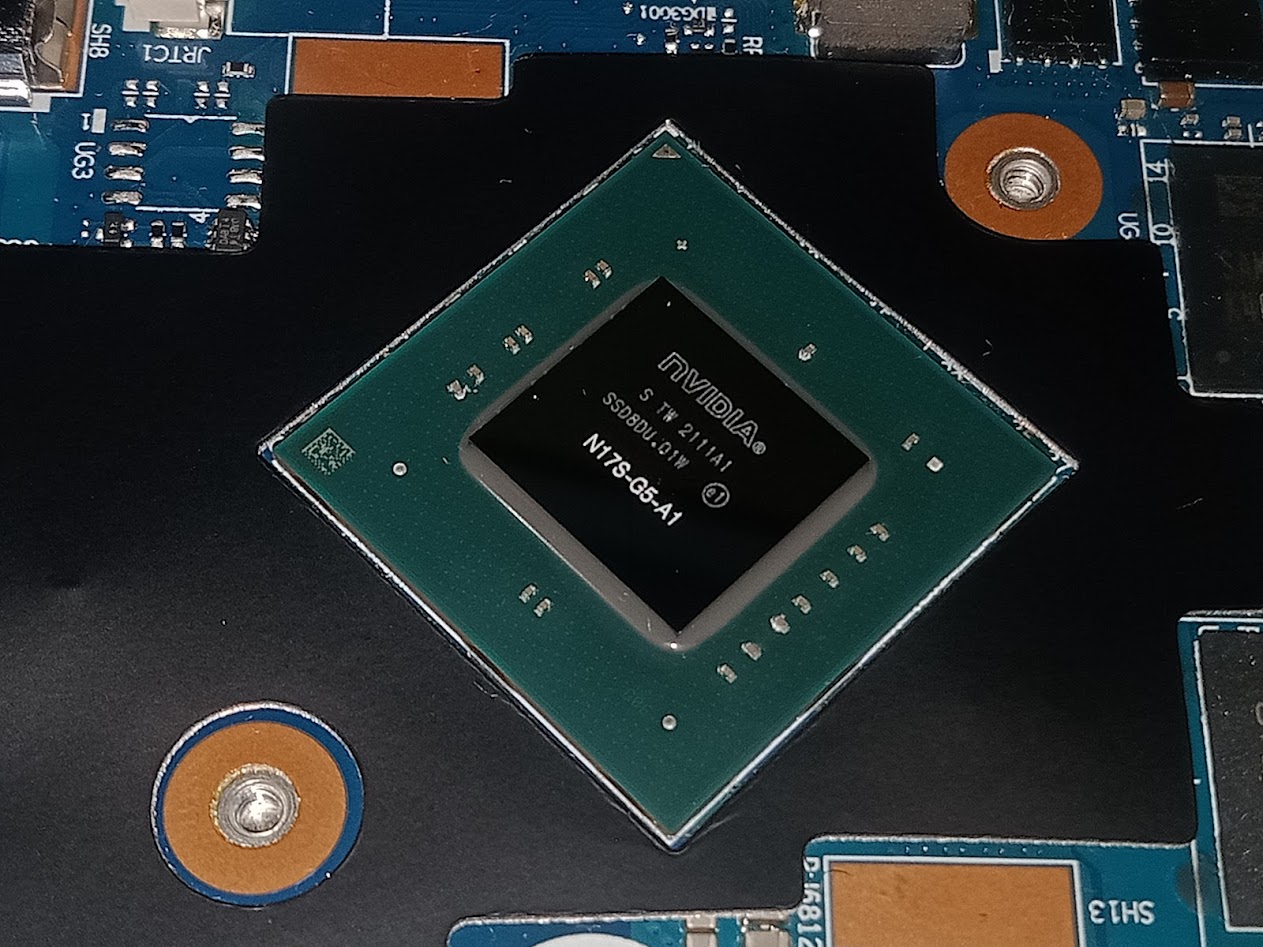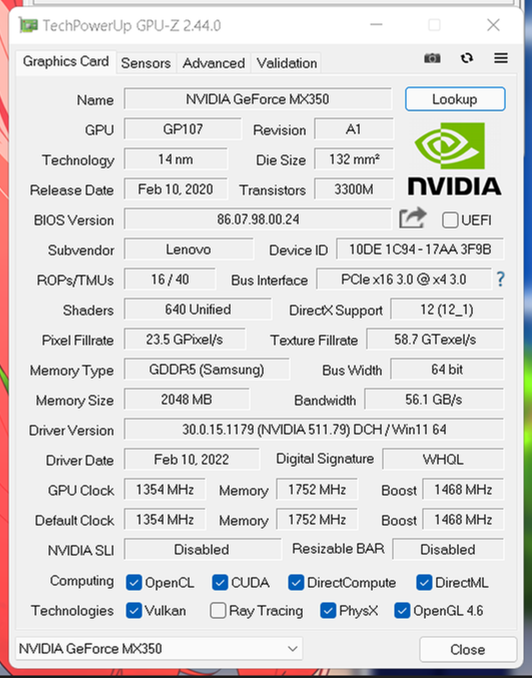Comparing: GeForce MX350 [Disk] vs Seagate Barracuda ST1000DM010-2EP102
In this comparison, we analyze two Disks: GeForce MX350 [Disk] and Seagate Barracuda ST1000DM010-2EP102, using synthetic benchmark tests to evaluate their overall performance. This side-by-side comparison helps users understand which hardware delivers better value, speed, and efficiency based on standardized testing. Whether you're building a new system or upgrading an existing one, this benchmark-driven evaluation offers valuable insights to guide your decision.

GeForce MX350 [Disk]
| Type: | Disks |
|---|---|
| Model: | GeForce MX350 [Disk] |
| Capacity: | 2GB, 1.5GB |
| Interface: | GDDR5 |

Seagate Barracuda ST1000DM010-2EP102
| Type: | Disks |
|---|---|
| Model: | Seagate ST1000DM010-2EP102 |
| Capacity: | 1TB |
| Interface: | SATA-III 6Gbps |
Specification Comparison Table
This specification comparison presents technical details of several devices or components to help you understand the key differences between each option. Use this table as a reference to determine which device best suits your needs.
| Specification | GeForce MX350 [Disk] | Seagate Barracuda ST1000DM010-2EP102 |
|---|---|---|
| Brand | Samsung | Seagate |
| Format | VRAM Disk | HDD 3.5 |
| Capacity | 2GB, 1.5GB | 1TB |
| Interface | GDDR5 | SATA-III 6Gbps |
Submission Comparison Table
This submission comparison table displays the number and details of benchmark data submissions from various devices or components. This information helps you understand the performance based on the benchmarks that have been tested, as well as providing an overview of the consistency and popularity of the available benchmark results.
| No. | Benchmark Software | GeForce MX350 [Disk] | Seagate Barracuda ST1000DM010-2EP102 |
|---|---|---|---|
| 1 | CrystalDiskMark |
Read: 1113.58 MB/s Write: 995.48 MB/s |
Read: 194.14 MB/s Write: 192 MB/s |
Submission Comparison Chart
This chart visualizes the benchmark scores comparison between two hardware devices based on submitted data.
Media Gallery
A collection of photos of tested hardware. These images can help you identify the physical form, model, and variant of the hardware in question. These photos are from our own documentation, and if they are not available we may not be able to document them.
About Hardware GeForce MX350 [Disk]
The NVIDIA GeForce MX350 is an entry-level GPU designed for thin and light laptops, delivering significant graphics performance improvements over the processor's built-in iGPU. The GPU is based on the Pascal architecture with 640 CUDA Cores, and features 2GB or 4GB of GDDR5 memory with 64-bit bus width. The MX350 is generally used for light graphics tasks such as photo editing, light video, and casual gaming, and provides GPU acceleration for CUDA-enabled creative applications.
But in this particular test, a portion of the video memory (VRAM) on the GeForce MX350 was configured as a VRAMDisk. The concept of a VRAMDisk is similar to a RAMDisk, but it uses the VRAM of the GPU as a super-fast storage medium. VRAMDisk allows the creation of temporary, high-speed drives that can be utilized for technical experiments, speed testing, or graphics caching in certain scenarios. Although its capacity is limited and volatile (data is lost on reboot), the high bandwidth and low latency of VRAM provide compelling performance in certain contexts.
The tests were conducted on a Lenovo IdeaPad Slim 3i 14ITL6 laptop with Intel Core i5-1135G7 processor, 12GB DDR4 3200MHz dual channel RAM, and Windows 11 22H2 operating system. The VRAMDisk was created from a 2GB GeForce MX350 GPU, with virtual disk sizes of 1GB and 1.5GB, using special software called GPU RAM Drive.
Benchmark results with CrystalDiskMark recorded read speeds of 1113.58 MB/s and write speeds of 995.48 MB/s, showing the high bandwidth potential of VRAM as a temporary storage medium. Although the performance does not match DDR4-based RAMDisks, VRAMDisks remain a unique and attractive solution for certain technical purposes, especially for users who want to utilize idle VRAM for fast I/O processes. With its dedicated laptop GPU form factor and PCIe x4 Gen 3.0 interface, the GeForce MX350 VRAMDisk opens up new exploration possibilities in the world of experimental graphics-based high-speed storage.
Device test (testbed):
Device: Lenovo IdeaPad Slim 3i 14ITL6
CPU: i5 1135G7
RAM: 12GB DDR4 3200MHz Dual Channel (8+4)
OS: Windows 11 22H2
Friday, 06 August 2021 04:34:19 | Update: 1 month ago
About Hardware Seagate Barracuda ST1000DM010-2EP102
The Seagate Barracuda ST1000DM010-2EP102 is a 1TB internal hard disk with a 3.5-inch form factor, designed for the storage needs of desktop computers. Featuring a 6Gbps SATA-III interface and 7200 RPM rotation speed, this HDD offers faster performance than 5400 RPM HDDs, improving system responsiveness for daily activities, multimedia and gaming.
With 64MB of buffer/cache, the Seagate Barracuda is able to handle data reads and writes more efficiently. This makes it perfect for storing large files such as videos, games, work documents, and data backups. While not as fast as an SSD, the combination of large capacity and high mechanical speed makes it an economical and powerful option for users who need a large storage space without sacrificing performance.
Built with 1 platter and 2 read and write heads, the drive is designed for thermal and operational efficiency. In a performance test using a Dell OptiPlex 5090 Tower system equipped with Intel Core i7-11700, 32GB RAM, and Windows 10, the drive was able to record 194.14 MB/s read and 192 MB/s write speeds via CrystalDiskMark - impressive numbers for a consumer-grade HDD.
In addition to its stable performance, the Barracuda series is also known for its durability and reliability. They are ideal for a variety of scenarios: from primary storage in desktop PCs, home media servers, to additional storage solutions in multi-drive systems.
Overall, the Seagate Barracuda ST1000DM010-2EP102 is the best 1TB hard disk choice for users who need large capacity, 7200RPM speed, and performance efficiency in a 3.5-inch form factor. It combines durability, speed, and affordability, making it an ideal solution for your desktop storage upgrade.
Device test (testbed):
Device: OptiPlex 5090 Tower
CPU: i7-11700
RAM: 32GB
OS: Windows 10
Thursday, 01 June 2023 02:30:00 | Update: 1 month ago

